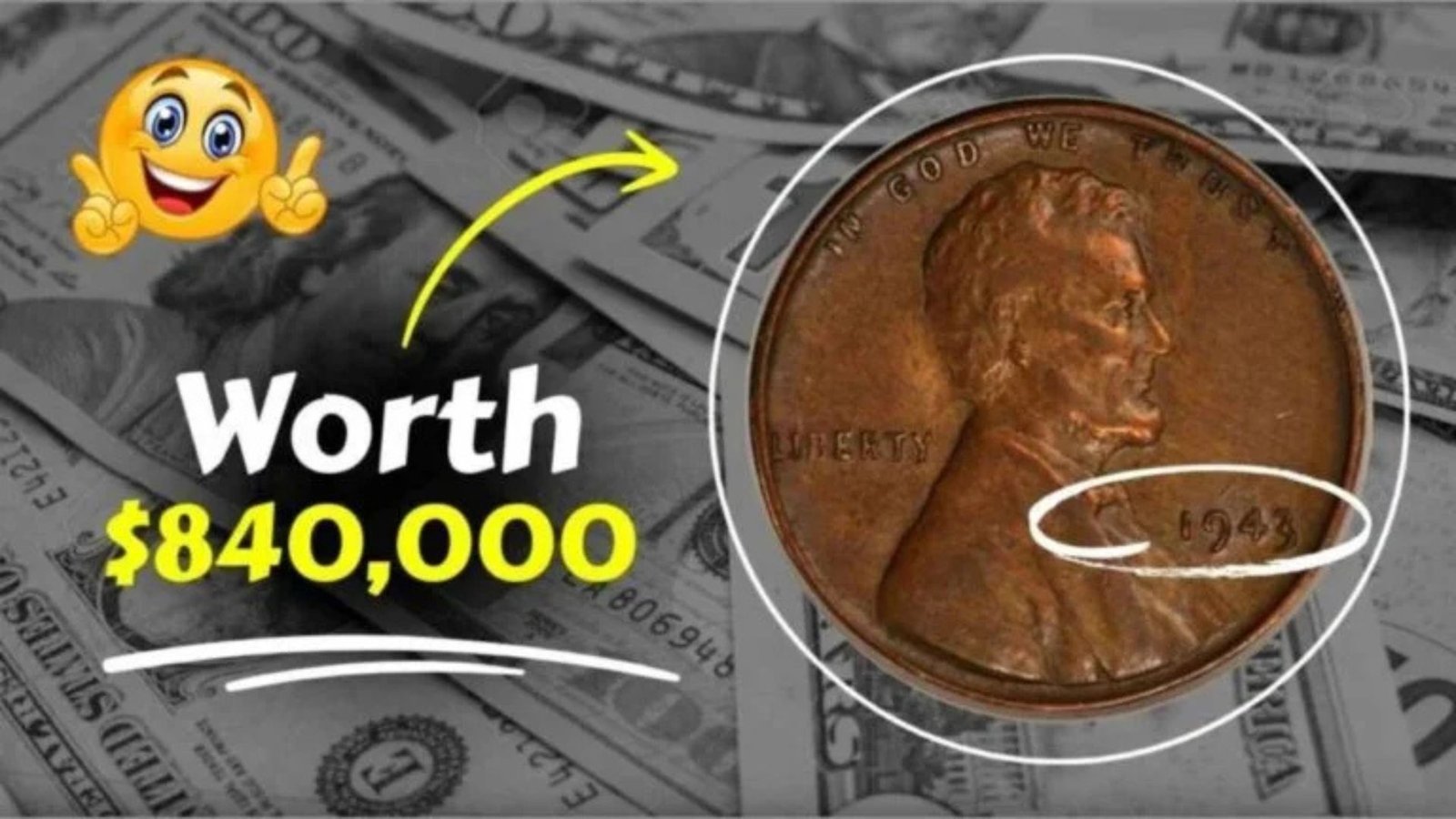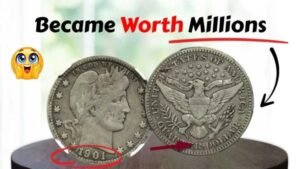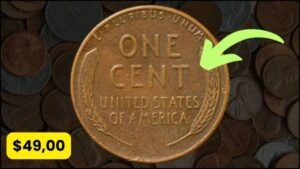Have you ever wondered if the loose change in your pocket could make you rich? The 1943 Lincoln Wheat Penny might just be that hidden treasure. This rare coin, struck during World War II, has captured the attention of collectors and could be worth up to $840,000 or more! In this article, we’ll break down everything you need to know about this valuable penny in simple terms, from its history to how you can spot one in your collection.
What Makes the 1943 Lincoln Wheat Penny So Special?
The 1943 Lincoln Wheat Penny is a standout in the world of coin collecting because of a unique mistake made during its production. In 1943, the U.S. Mint switched to making pennies from steel instead of copper to save copper for the war effort. However, a tiny number of pennies were accidentally struck in copper that year, creating one of the rarest coins in American history.
Why Are These Pennies Rare?
- Material Mix-Up: Most 1943 pennies are made of steel, but a few copper pennies were mistakenly produced.
- Limited Production: Experts estimate only 10 to 20 genuine 1943 Lincoln Wheat Pennies in copper exist today.
- High Demand: Collectors are eager to own this rare coin, driving its value sky-high.
How Much Is a 1943 Lincoln Wheat Penny Worth?
The value of a 1943 Lincoln Wheat Penny depends on its material and condition. Here’s a quick breakdown:
| Penny Type | Material | Estimated Value |
|---|---|---|
| 1943 Steel Penny | Steel | $0.10 – $1 (common) |
| 1943 Copper Penny (Rare) | Copper | $50,000 – $840,000+ |
| 1943-D Copper Penny | Copper | Up to $1.7 million (unique) |
| 1943-S Copper Penny | Copper | $100,000 – $500,000+ |
Notable Sales of the 1943 Lincoln Wheat Penny
- A 1943 copper penny sold for $840,000 at auction in 2021.
- A one-of-a-kind 1943-D copper penny fetched $1.7 million in 2010.
- Even lower-grade copper pennies can sell for $50,000 or more.
How to Identify a 1943 Lincoln Wheat Penny
Think you might have a 1943 Lincoln Wheat Penny? Here’s how to check:
Step 1: Look at the Date and Mint Mark
- Check the year: It should clearly read 1943.
- Look for a mint mark (a small letter under the date):
- No mark: Minted in Philadelphia.
- “D”: Minted in Denver.
- “S”: Minted in San Francisco.
Step 2: Test the Material
- Magnet Test: Steel pennies stick to a magnet; copper pennies do not.
- Color: Steel pennies are silver-gray, while copper pennies have a reddish-brown hue.
Step 3: Examine the Condition
- Coins in better condition (less wear, scratches, or damage) are worth more.
- Look for sharp details, especially in Lincoln’s portrait and the wheat stalks on the back.
Step 4: Get It Authenticated
- If you suspect you have a copper 1943 Lincoln Wheat Penny, take it to a professional coin grader like PCGS or NGC. They can verify its authenticity and grade its condition.
Why Were Copper Pennies Made in 1943?
During World War II, copper was needed for military supplies like bullets and wiring. The U.S. Mint decided to make pennies from steel coated with zinc to save copper. However, a few copper planchets (blank coins) from 1942 were accidentally used in 1943, creating the rare 1943 Lincoln Wheat Penny.
Fun Fact: The “Silver” Penny
The steel 1943 Lincoln Wheat Penny is often called the “silver penny” because of its shiny, silver-like appearance. While these are common and worth only a few cents, they’re still a cool piece of history!
How to Find a 1943 Lincoln Wheat Penny
You’re not likely to find a copper 1943 Lincoln Wheat Penny in your pocket change, but here are some tips to start your treasure hunt:
- Check Old Collections: Look through old coin jars, family heirlooms, or your grandparents’ piggy banks.
- Visit Coin Shops: Local coin dealers may have 1943 Lincoln Wheat Pennies for sale or can help you identify one.
- Attend Coin Shows: These events are great places to meet collectors and learn more about rare coins.
- Search Online: Websites like eBay or auction houses like Heritage Auctions often list 1943 Lincoln Wheat Pennies, but beware of fakes.
Beware of Fakes!
Some people try to pass off fake copper 1943 Lincoln Wheat Pennies by:
- Coating steel pennies with copper.
- Altering the date (e.g., changing a 1948 to look like 1943).
Always have a professional verify your coin to avoid scams.
Tips for Collectors
If you’re new to coin collecting or want to hunt for a 1943 Lincoln Wheat Penny, here are some beginner-friendly tips:
- Start Small: Begin with common 1943 steel pennies to learn about the series.
- Join a Community: Connect with other collectors through online forums or local coin clubs.
- Learn Grading: Understand how coin condition affects value by studying grading guides from PCGS or NGC.
- Store Properly: Keep your coins in protective holders to prevent damage.
Why Collectors Love the 1943 Lincoln Wheat Penny
The 1943 Lincoln Wheat Penny is more than just a coin—it’s a piece of history. Its rarity, combined with the fascinating story of its accidental creation, makes it a must-have for collectors. Whether you’re a beginner or a seasoned numismatist, finding one of these pennies is like striking gold.
Historical Significance
- The penny reflects America’s resourcefulness during World War II.
- Its error makes it a unique snapshot of a production mistake.
What to Do If You Find a 1943 Lincoln Wheat Penny
If you think you’ve found a copper 1943 Lincoln Wheat Penny, follow these steps:
- Don’t Clean It: Cleaning can damage the coin and lower its value.
- Store It Safely: Place it in a protective coin holder.
- Get It Appraised: Contact a reputable coin dealer or grading service.
- Consider Selling: If it’s authentic, you could auction it for a life-changing sum!
Final Thoughts
The 1943 Lincoln Wheat Penny is one of the most exciting coins to hunt for, with the potential to turn pocket change into a fortune. While the odds of finding a copper version are slim, the thrill of the chase makes it worth checking your coins. So, dig through your change, visit a coin shop, or explore your family’s old collections—you never know when you might uncover a 1943 Lincoln Wheat Penny worth $840,000!
Have you checked your pennies yet? Start your treasure hunt today and let us know if you find a rare gem!




